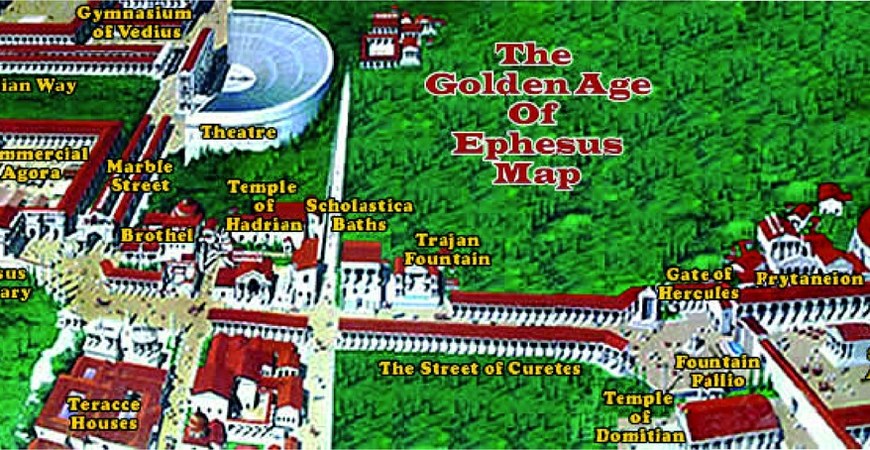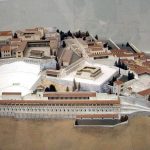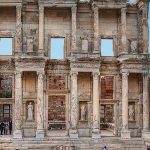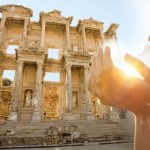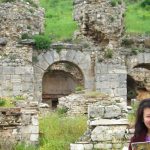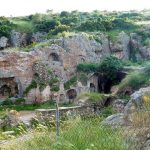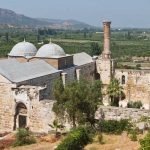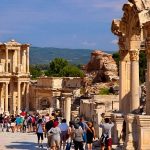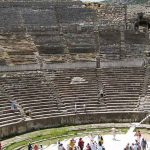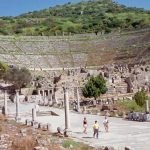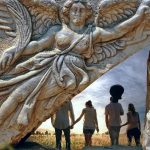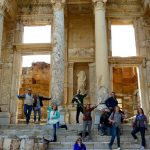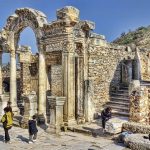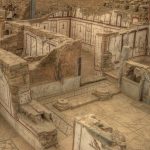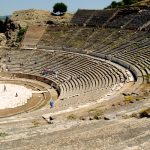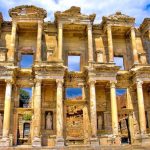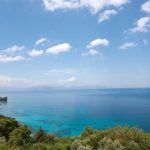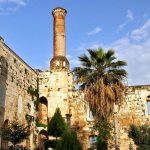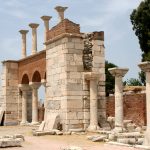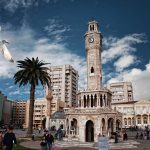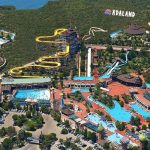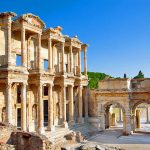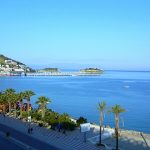Ephesus Ancient City in Aegean Coastline of Turkey – Chapter 8
Water Palace: City water was taken from the fountain just against the state agora. The water channels, leading to Magnesia gate via Aydin road, and from there to water palace, are not damaged yet. These water channels, which will be restored in short time, are the only water channels from the Hellenistic Age.
Curets Street: Begining at Melius temple and leading to west with seve¬ral monuments buildings and columns along each side of it, the Curets street was been built from marble stones. The picture shows the Curets street district.
Trajan Fountain Raising with columns to the east-north direction along the Courts street, and having a two-story buildings height, the magnificent statue of Emperor Trajan was in the middle of the building, where water was reaching the fountain. The double step-base of the statue is set to its original place. As noticed from the picture, the fountain is not damaged very much.
Hadrianus Temple: Though its smallness, Hadrian’s temple is one of the most interesting temples in Ephesus. It is built in Corinth style and con¬sists of a covered main room (cella) and a verandah. The entrance was roo¬fed by a stone arch’. There were two columns in the middle of the front si¬de, which had a verandah and a column at each comer. The millings each on two’ columns at the floor sides are round shaped.
Memius Temple: One can notice a base, built from stone blocks in Rustic stymie at the north of Curets Street. After excavations, an ancient table tells that a monument based on these blocks was built in the name of Melius, one of the grandchildren of dictator Suhla in the end of the Hellenistic Age. Another table excavated around Memius Temple defines the monument as a heron or fountain. The round shaped Roman altar, built just in the middle of the cut, is brought from elsewhere and put here temporarily.

